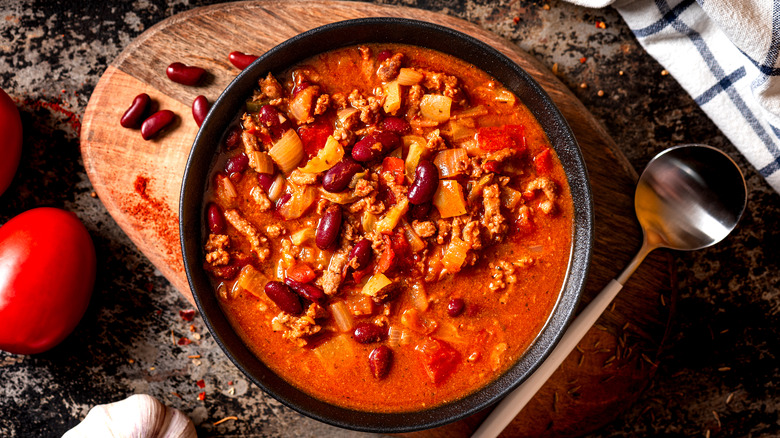Why You Should Start Making Your Own Chili Seasoning
From the Gold Rush of the 1800s to being named the official state food of Texas in 1977, chili has historically been a beloved dish with a loyal fan base (via Daily Journal). It's one of those classic go-to meals that's not only warm and filling on a cold winter evening, but is just as enjoyable around a campfire, at a ball game with a bag of Fritos, or made in a slow cooker on a busy weeknight. It is also a dish that you can easily add your own spin to, whether that's by making a tasty vegan 3-bean chili, piling it high as a topping on a hot dog, or even by adding surprising ingredients like pancetta and chocolate.
The most essential component in any chili recipe is the spice blend. You can find shakers of chili powder and ready-to-go packet mixes in every grocery store, but creating your own chili seasoning is a totally worthwhile alternative. It's easier than you might expect, and really allows you to explore different flavors.
Just the right mix
Creating your own seasoning mix is one of the best ways to make a great chili, since you get to use the exact amount of spice that you enjoy. And once you find the right blend in your own kitchen, you can store it in a jar for your next few batches. Add a little bit of each seasoning at a time and taste it along the way to arrive at the perfect quantity.
Making something like a Texas red chili is a great place to start when honing your seasoning techniques. Spices Inc. even suggests trying flavors like ground coriander, which imparts a hint of citrus, or cinnamon, which adds a little sweetness to your final product. Don't forget to consider the timing when it comes to adding in the seasonings, so everything comes together just right.
According to The Washington Post, some of the best chili cooks out there opt not to use store-bought chili powder, as they often contain not only ground chiles, but salt, oregano, and cumin; those extra spices are great in a chili seasoning blend, but should be added separately. For those who like five-alarm levels of heat, consider adding whole hot peppers during the cooking process instead of ground chiles (but make sure to keep them in a cheesecloth or strain them out toward the end). This way, the spice is infused in the chili without the peppers being in the way when it's finally time to dig in.

